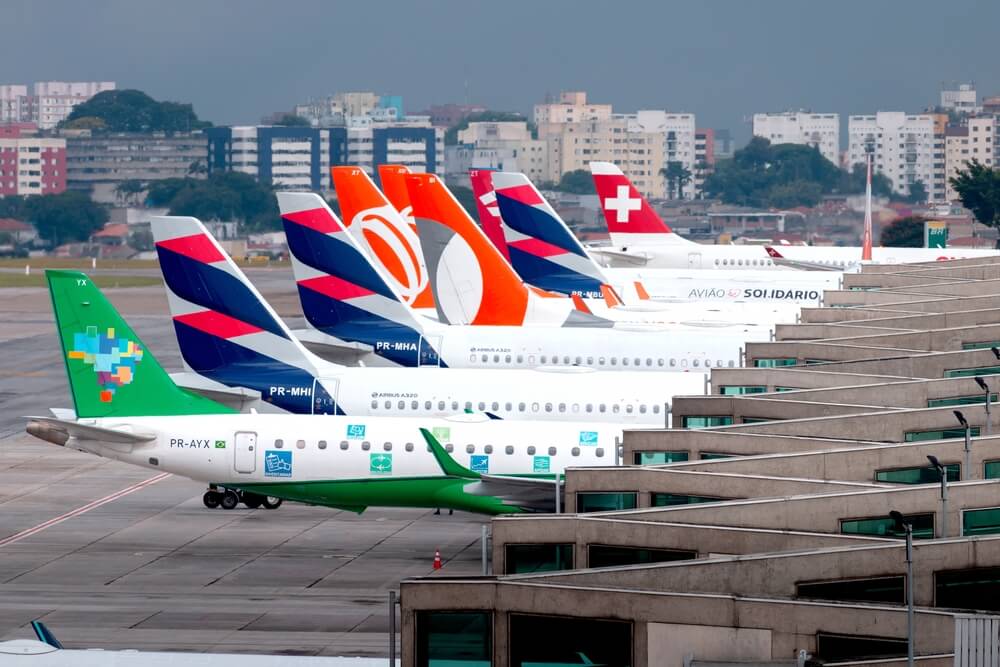The caution with which the company arrived at this year's Farnborough Air Show, one of the world's largest deal-making shows in the aviation industry, has paid off for Boeing.
Although the company arrived with a far more modest presentation than in previous years, displaying only one of its aircraft (787 Qatar Airways), Boeing became the star of the Farnborough opening show with a large number of orders.
The company closed deals totalling $12.6 billion on the first day of the show. This represents nearly a quarter of the total revenue the Farnborough Air Show generated upon its opening (approximately $50.8 billion).
Boeing will have Asian airlines—Korean Air and Japan Airlines—to thank for the long-awaited recovery from a poor period caused by incidents and production control problems.
They have ordered a total of 60 wide-body aircraft, the largest share of the 78 aircraft Boeing sold on the first day.
Relief after several crises
With these deals, Boeing continues its dominance over its main competitor, Airbus, in the sale of the largest and most expensive wide-body aircraft. However, the orders at the Farnborough show will only partially close the gap between Boeing and Airbus, as the European manufacturer has received around 260 new orders since the start of the year, while its US rival has received around 190.
The strong start and high number of orders on the first day of the biggest air show of the year are undoubtedly a relief for Boeing, which is still recovering from a series of technical incidents that put it under regulatory scrutiny.
The period of major regulatory restrictions, lawsuits, and reputational damage has prompted Boeing to attend this year's Farnborough show with great caution
The incident in January, when a piece of fuselage fell off an Alaska Airlines flight, was another nightmare for the US aircraft manufacturer, which had been recovering from the crashes of its two 737 Max in 2018 and 2019, which killed a total of 346 people.
The period of major regulatory restrictions, lawsuits, and, above all, reputational damage has prompted Boeing to attend this year's Farnborough show with great caution and "to adapt its presence to prioritise factory safety and quality," as the company announced on July 15.
No response to increased demand
A very successful start to business at the Farnborough Air Show will ease some of Boeing's trauma, but for the company and other major manufacturers, meeting the increased demand that was one of the main themes of this year's air show will be a major headache.
While demand in air transport has already exceeded pre-Covid-19 levels, manufacturers have been struggling to meet volumes and deadlines due to disrupted supply chains.
Airlines' aircraft fleets are still insufficient to meet the growing demand
Airlines' aircraft fleets are still insufficient to meet the growing demand, as evidenced by the summer season's increased air traffic, and the problems with the delivery of new aircraft are expected to persist until the end of the year.
Unfinished aircraft, awaiting the installation of a wide range of components whose delivery has been interrupted, fill the aircraft parks of the largest manufacturers. The war in Ukraine, for example, has led to bottlenecks in the supply of certain materials, such as titanium.
Extensive, extraordinary quality controls, like those Pratt & Whitney has on hundreds of its engines carried over from last year to this year and next, contribute to the delays in engine deliveries.
The gap will be deep in the next 20 years
Since the pandemic, suppliers have reduced their capacities due to uncertain product placement, resulting in interruptions in the supply of spare parts. These have still not adapted to the rapidly growing demand, which both airlines and manufacturers are struggling to respond to.
 Over the next 20 years, there is an anticipated 3% increase in new aircraft deliveries, i.e., a demand for about 44,000 new commercial aircraft by 2043
Over the next 20 years, there is an anticipated 3% increase in new aircraft deliveries, i.e., a demand for about 44,000 new commercial aircraft by 2043
While manufacturers and airlines are pleased with the estimates that the industry's growth will be stable in the coming years, supply chain disruptions and bottlenecks will remain a major problem for a long time.
Boeing published a Commercial Market Outlook on the eve of the Farnborough show, in which it warns of the long-term gap between the growth in passenger demand and the ability of manufacturers to meet it.
Over the next 20 years, there is an anticipated 3% increase in new aircraft deliveries, i.e., a demand for about 44,000 new commercial aircraft by 2043.
However, over the same period, travel demand will grow faster, at an average of 4.7% per year, meaning that manufacturers will have to keep pace with market demands for a long time.
Boeing suggests reducing this gap by increasing passenger load factor and longer daily aircraft utilisation, as well as raising passenger ticket prices, which have remained relatively unchanged globally for the past 20 years.